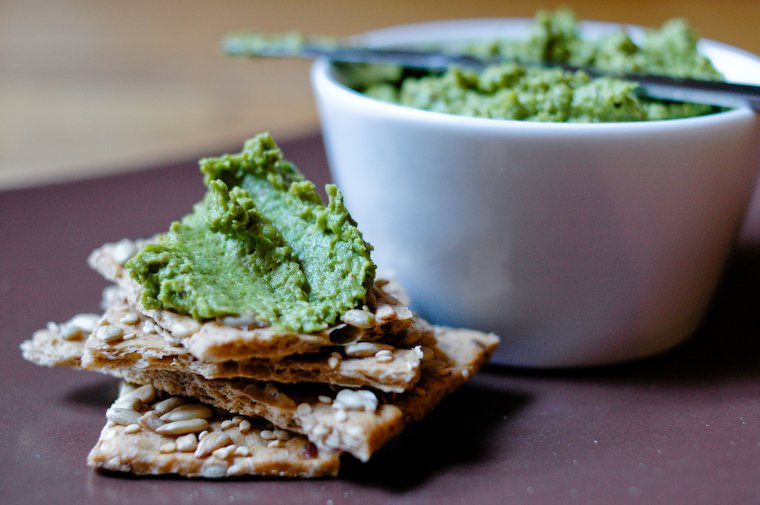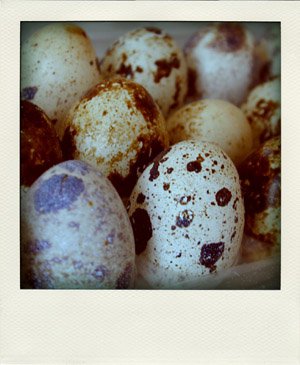If you’ve been invited to dinner at my house lately, the odds are high that you’ve been greeted with a glass of chilled white wine and a platter of multigrain crackers topped with this bright green spread. “Guacamole?” you may have asked. “No, peacamole!” I’ll have responded, or rather, if you and I speak French together: poicamole*.
I have made and served countless batches of this spread over the past couple of months. It is absolutely not green pea season, though that happy day will come soon enough, but frozen peas have recently become a staple of my cooking wardrobe (why it took me so long to adopt them, I know not), making this a quickly assembled appetizer.
What’s peacamole?
It is a rich-textured spread that’s sweet and earthy from the peas, subtly nutty from the use of almond butter, and livened up by the signature zing of cilantro**. Spread on the spelt crispbreads I buy at the supermarket and can’t get enough of, it makes absolutely irresistible bites. And if I’m lucky and I have leftovers, I pair the peacamole-covered crackers with a beet and carrot salad and a soft-boiled egg for a very good solo lunch.
I initially developed this recipe for ELLE à table, the French cooking magazine in which I write a bimonthly column: it came to illustrate a story in this month’s issue (#63) about the increasingly frequent intersections between the worlds of perfume and cuisine.
Peacamole: A simple spread made with green peas and cilantro
One of the examples I give is that of essential oils: these highly concentrated plant extracts have long been used in fragrances and cosmetics, but are now made available in organic, edible versions*** for cooks to use, oh-so-sparingly, in their dishes, emulating the flavor of a fresh spice, fruit, flower, or herb — here, cilantro. (Note that the recipe below includes a variation using fresh cilantro leaves.)
Essential oils are so supercharged that a drop or two is usually plenty, and because oil doesn’t dilute in water, it should be added into the dish along with an oil-like element or liquid sweetener. The flavoring power of essential oils weakens when they’re heated, so they are best added at the very last minute, or used in a no-cook preparation such as this one. If you wish to bake with them, you’ll need to use a little more. Experimentation is the name of the game****, but you should always err on the side of caution; add one drop too many and your dish may be inedible.
As a side discovery, I’ve also found that frozen peas can be steamed in a rice cooker. Who knew? You just place the peas in the bowl, put the lid on, and set it on “cook” for 14 minutes, or until tender. I don’t own a steamer, so I normally steam vegetables using bamboo baskets over a pan of boiling water; this method is simpler, faster and, with my kitchen setup at least, more energy-efficient.
~~~
* A green pea = un petit pois, hence peacamole = poicamole.
** As always, cilantro haters are welcome to use the herb of their choice (flat-leaf parsley, chervil, basil, mint…) instead.
*** Note that essential oils should not be consumed by pregnant or breast-feeding women, young children, or people with allergies.
**** I don’t know of an English-language recipe book that would guide you in these experimentations, but if you read French, you can take a look at Valérie Cupillard‘s book, Cuisiner avec les huiles essentielles (La Plage, 2006).
Continue reading »








